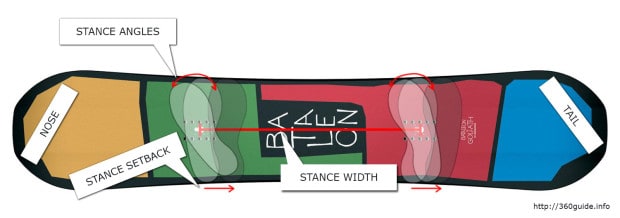

- #How to measure ski edge angle how to#
- #How to measure ski edge angle install#
- #How to measure ski edge angle pro#
Place the binding so that it is as centred as possible in relation to the width of the board. Next, place the boot in the binding, then close the straps for better visualization. Simply place the bindings with a centred spread on the board and with identical angles.Ģ) Bindings centred in relation to the width of the board This way, with the right settings, the rider can easily experiment with alternating between forward leg. a board that can go down on both sides without problem). We recommend beginner riders use a twin snowboard(i.e.
#How to measure ski edge angle install#
Install the right binding towards the tip of the board and the left binding towards the tail.

Is your answer left? Then you are a regular rider.The first important thing to remember! Are you going downhill with your right leg in front or your left leg? There are three important settings to remember when positioning your bindings on your snowboard: according to the front foot, centred in relation to the width of the board, and the distance between the bindings and the angles of the bindings on the board. Both systems allow you to install the bindings and adjust their positioning in width to match the rider’s position (wider or narrower depending on preference). The snowboard will necessarily have one or the other of these two systems: the rail is placed in the middle of the board along its length and the screw inserts are placed centrally in the middle of the board as well.
#How to measure ski edge angle how to#
Burton’s site has some videos on how to install your bindings according to the type of installation system. A rail system, on the other hand, is a system where you slide two screw inserts into the rail and then screw the two screws located on the side of the bindings into the rail, like Burton’s Channel system. The 2X4, 4X4 and Burton 3D insert systems are screw systems, where you position the disc of the base of the binding in front of the right screw inserts.

#How to measure ski edge angle pro#
The three I tried this go around were using a calibrated SVST Pro Bevel Meter, Digital Angle finder and magnet and edge guides with a Sharpie ink. There are many options to measure edge geometry. If the bases are flat, the edges sharp, perform a few base prep and WOTD (wax of the day) cycles and get some vertical on your new rides.) (On one hand, I almost wish I didn't know, so I could simply ski them without preconceptions or thinking about the edge geometry. With the intent of skiing them as is first, then adjust, It's good to record the geometry so you know where you started vs where you may end up. A case in point is a recent purchase were the 'factory spec' is 1:1 (1 degree base & 1 degree side). The REAL ANSWER to 'what's the factory spec' of my X, Y or Z skis question is, MEASURE THEM because variables exist. It's good to quantify the edge geometry on your skis.


 0 kommentar(er)
0 kommentar(er)
